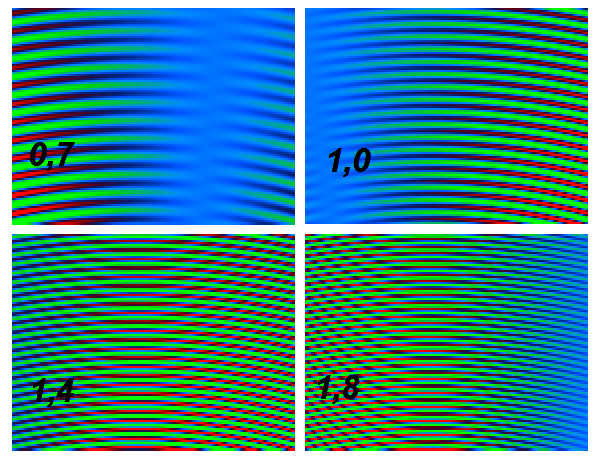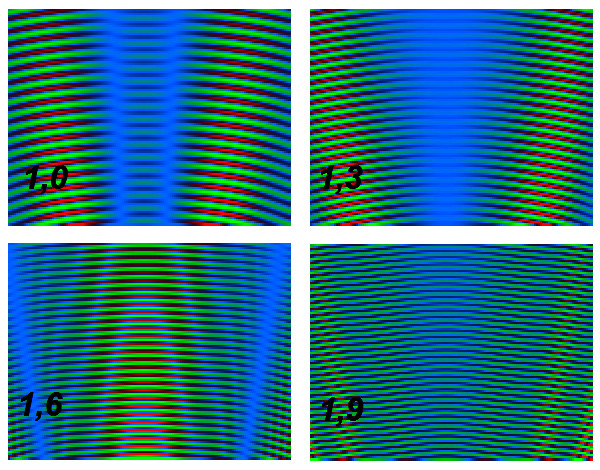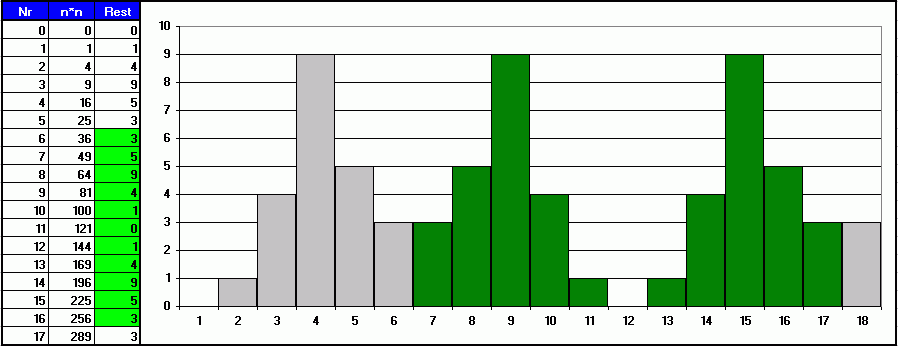
The two waves are reflected from to bottom with a time
delay and thus create different directions of the air pressure at any local
point in the room which is noticed as another direction of the sound reflection
by the ear finally. With increased frequency the direction of the newly
built wave changes from left to right alternatingly according to the period
length of the wave and the fractional delay added by the reflecting elements.
This method can be used to super impose more than one
waves leading to the classical sound diffusors invented by Manfred Schroeder
already in the 1960tes. Below 12 partial waves of a N11 diffusor are analyzed
having the structure 0,1,4,9,5,3,3,5,9,4,1,0 for the relative fractional
offsets. These integer numbers were derived from a modulo operation and
make sure that only multiples of the partial waves are used which is essential
with this kind of diffusers.

Although this is only a 2D-Simulation, it shows the distribution
of the different frequencies in the room. Strong deviation appears for all
of the frequencies in the region of the so called design frequency of the
diffusor. Almost 180° degrees are covered in theory within one octave being
repeated of each octave below and beyond it.
Here is an example of the integer numbers used for
Schröder diffusers: The pattern derived from the modulo operation is repeated
regularly with the number of the well. For the real diffuser any cut out
can be used

This page was imported from my German
web www.solastudio.de
© 2001 J.S.